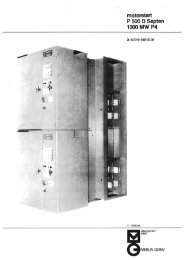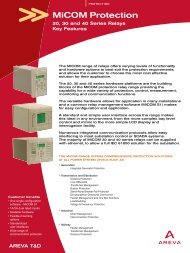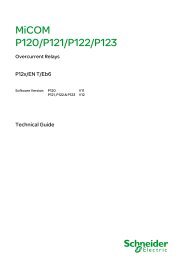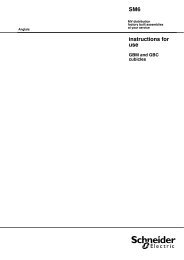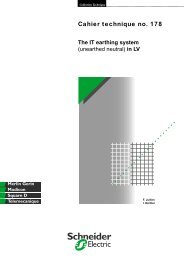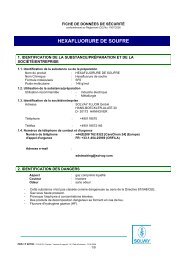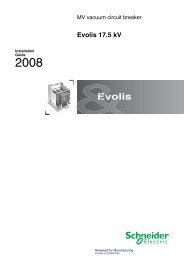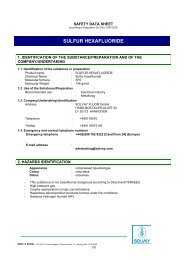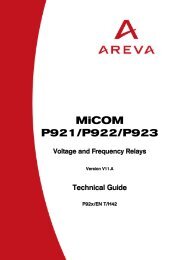You also want an ePaper? Increase the reach of your titles
YUMPU automatically turns print PDFs into web optimized ePapers that Google loves.
2 Overload on the neutral conductor2.1 Third harmonics and multiples of 3Consider a simplified system consisting of abalanced 3-phase source and three identicalsingle-phase loads, connected between phaseand neutral (see fig. 12).irisLoadLoadIn this simplified example, the third orderharmonic currents in all 3 phases aretherefore identical.Since the current in the neutral is equal to thesum of the currents in the phases, the componentof order 3 of the neutral current is equal to thesum of the components of order 3, ie:in 3 = 3ir 3As a general rule, for balanced loads, harmoniccurrents of orders which are a multiple of 3 are inphase and are added up arithmetically in theneutral conductor, while the fundamentalcomponents and harmonics of orders which arenot multiples of 3 cancel one another out.Third order harmonic currents are thereforezero-sequence currents, circulating in phasein all three phases.itinLoadReasoning based on graphic representationc Superimposition of third harmonicsFigure 13 shows three 3-phase sinusoidalcurrents at 50 Hz and three sinusoidal currentsat 150 Hz, each in phase with one of thecurrents at 50 Hz. These three currents areequal and are therefore superimposed.Fig. 12: Single-phase loadsIf the loads are linear, the currents constitute abalanced 3-phase system. The sum of the phasecurrents is therefore zero, as is the neutralcurrent.in = ∑i i = 0If the loads are non-linear, the phase currentsare non-sinusoidal and therefore containharmonics, particularly of orders which aremultiples of 3.Since all three-phase currents are equal, thethird order harmonic currents, for example, havethe same magnitude and can be written as:i I 3 sin 3 ωt⎛ 2π⎞i s3 = I3 sin 3 ⎜ωt− ⎟ = I sin ( 3 t − 2 ) = i⎝r33 ⎠ 3 ω π⎛ 4π⎞i t3 = I3 sin 3 ⎜ωt− ⎟ = I sin ( 3 t − 4 ) = i⎝r33 ⎠3 ω πr3 = ( )050Hz150Hz0 s 0.02 s0.04 sFig. 13: 3-phase currents at 50 Hz and 150 Hz drawnCahier Technique <strong>Schneider</strong> <strong>Electric</strong> no. 202 / p.7



